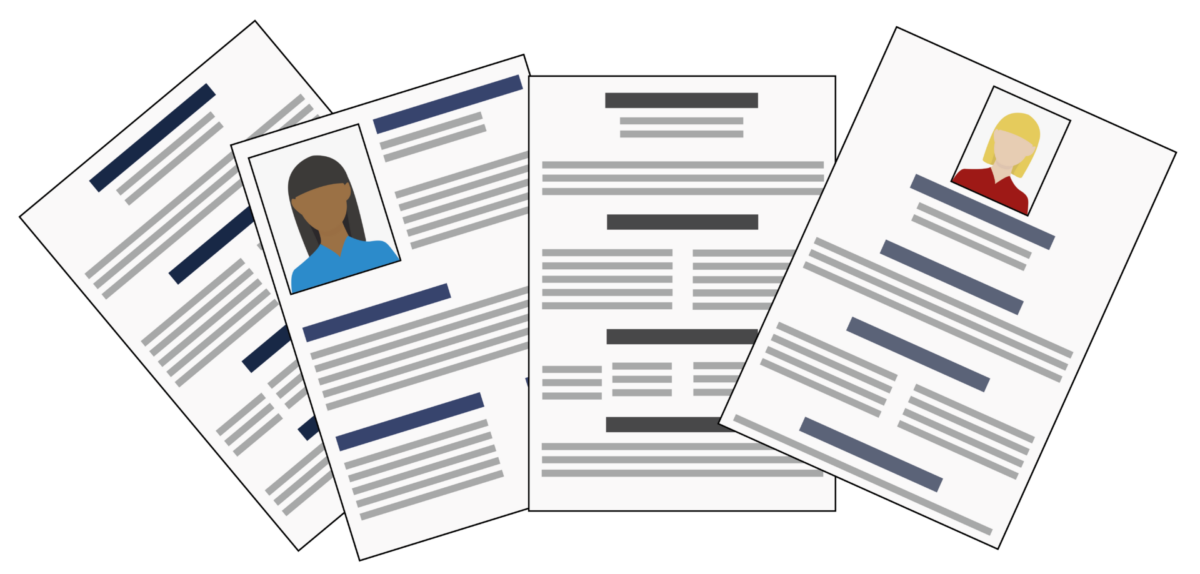With economic woes and stiff competition for desirable positions, securing your ideal job in 2022 will not be easy. However, making a professional resume that highlights your relevant experience, achievements, and skills remains the most effective route to catching the eye of recruiters and earning a job interview.
We appreciate that making a resume isn’t easy, whether you are a recent graduate, unemployed, climbing the professional ladder, or making a career path change. If you follow our resume writing steps outlined below, you are sure to set yourself up for job-hunting success.
Choose a resume format
Before you put pen to paper, the first step in making a resume is determining the most appropriate format. The three most popular and effective resume formats are reverse-chronological, skills-based, and a combination of the two.
The advantages of each resume format are:
- Reverse-chronological resume: Appropriate for most job seekers, listing your career history, starting with your most recent job. The format is effective because your latest roles are likely to be most relevant to the job you are applying for.
- Skills-based resume: If you have little work experience, are changing career paths, or have employment gaps, then prioritizing transferable skills over past jobs brings the evidence of your suitability to the fore.
- Combination resume: If you are highly experienced and hold a set of specialized skills, a combination resume ensures you emphasize both your career successes and advanced skills.
Add your contact details
Your name should be your résumé’s title, and below this, you can add your contact details. The contact details to include on your resume are your phone number, email address, location, and a link to your online portfolio, website, or LinkedIn profile.
Your location does not need to be your full address because most job applications are made by email. You can highlight your city or state or mention remote working if working from home is relevant.
Write a resume introduction
Below your contact details, you should include an introductory paragraph that summarizes your skills, qualifications, career aspirations, and what makes you an ideal candidate.
Your resume introduction should focus on the most influential factors for your consideration. You might focus on your career, qualifications, skills, and why you are interested in the position (career goals). Your resume introduction should be two to three sentences.
You should add your work experience, education, and professional skills following your introduction. Add these in the order that makes the most sense to your situation. For example, if you are a graduate, you will place your education before part-time work experience.
Add your work experience
List your relevant work experience in reverse-chronological order. You should include the job title, company name, employment dates, and bullet point details.
We recommend creating bullet points focusing on achievements, quantifiable facts, and responsibilities that indicate you are an ideal candidate for the job you are applying for. It helps to read the job advert/description to determine the skills and experience the recruiter is seeking and highlight these throughout your resume.
Add your education
Your educational achievements are essential if you have little work experience or are a recent graduate. You can make the most of this section by including subjects, grades, degree modules, honors, and club participation.
The educational details to include on your resume are the names of colleges and universities, graduation dates, degrees, and your GPA, rounded up to the first decimal place (3.0)
Add your professional skills
Your professional attributes include hard and soft skills. Hard skills are specific technical skills such as computer or equipment proficiency and foreign languages. Soft skills are personal traits such as logical reasoning, self-motivation, and empathy.
You can provide evidence to back up your claims by mentioning certifications, awards, performance statistics, scholarships, professional affiliations, volunteer work, and grants.
Resume writing tips
Our top resume writing tips include:
- Choose an easy to read fonts such as Arial or Calibri
- Use a font size of 10pt or larger
- Have someone proofread your resume
- Spellcheck your resume
- Keep your resume to one or two pages
- Only choose a creative resume format if creativity is relevant to the job
- Ensure your contact details are accurate
- Personalize your resume for each job application
- Quantify your achievements
- Restrict your work history to fifteen years
- Don’t include your religion, marital status, age, race, or sexual orientation
- Include a cover letter
